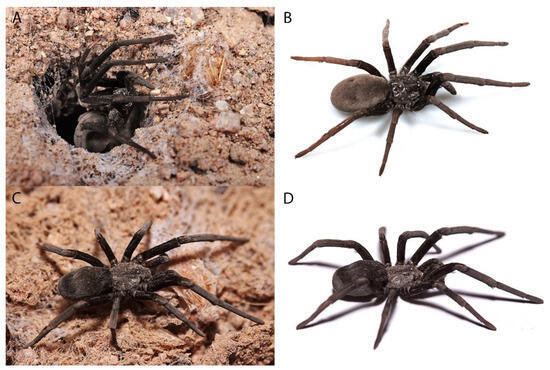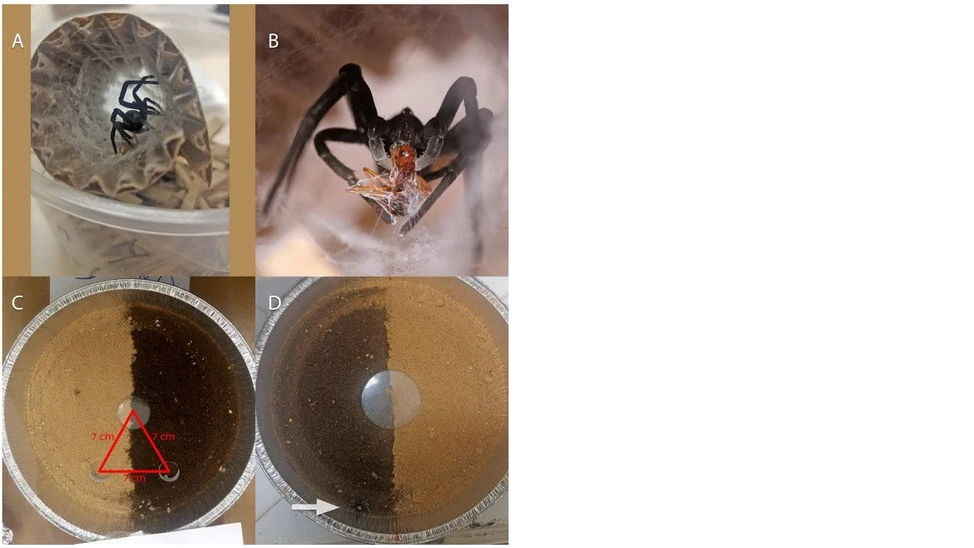Getting your Trinity Audio player ready...
A new species of desert burrow-dwelling spiders not known to the scientific community have been discovered by Israeli researchers in the southern part of the country.
The spider, which constructs silk-lined nests in burrows, was discovered by researches from the Hebrew University of Jerusalem and Ben Gurion University during the five-year monitoring of oil spill effects on the species. The species was discovered in the southeastern Arava valley.
The velvety black spider was named Sahastata aravaensis - based on its habitat. It belongs to the Sahastata genus of the Filistatinae family, also known as the crevice weaver family.
The spider species that was discovered is the largest of the Filistatinae family in Israel and it stands out with its velvety black color. The researchers estimate the spider's life expectancy to be four years (most spiders live about two years), most of which he spends in a vertical, silk-coded burrow.
The study that was conducted analyzed how two oil spills that occurred in 1975 and 2014 in the hyper-arid desert would affect the spider populations and concluded that the incidents pose negative and long-lasting effects.
The researchers found that the number of arachnid burrows in the areas that were contaminated was significantly lower than the number in other nearby clean areas.
In laboratory experiments, where spiders were made to choose between contaminated soil and clean one, most species chose the clean soil at the end of the first day of the experiment.
At the end of the experiment, the researchers assessed that the new species can be used as a bioindicator of persistent soil pollution in desert habitats.



